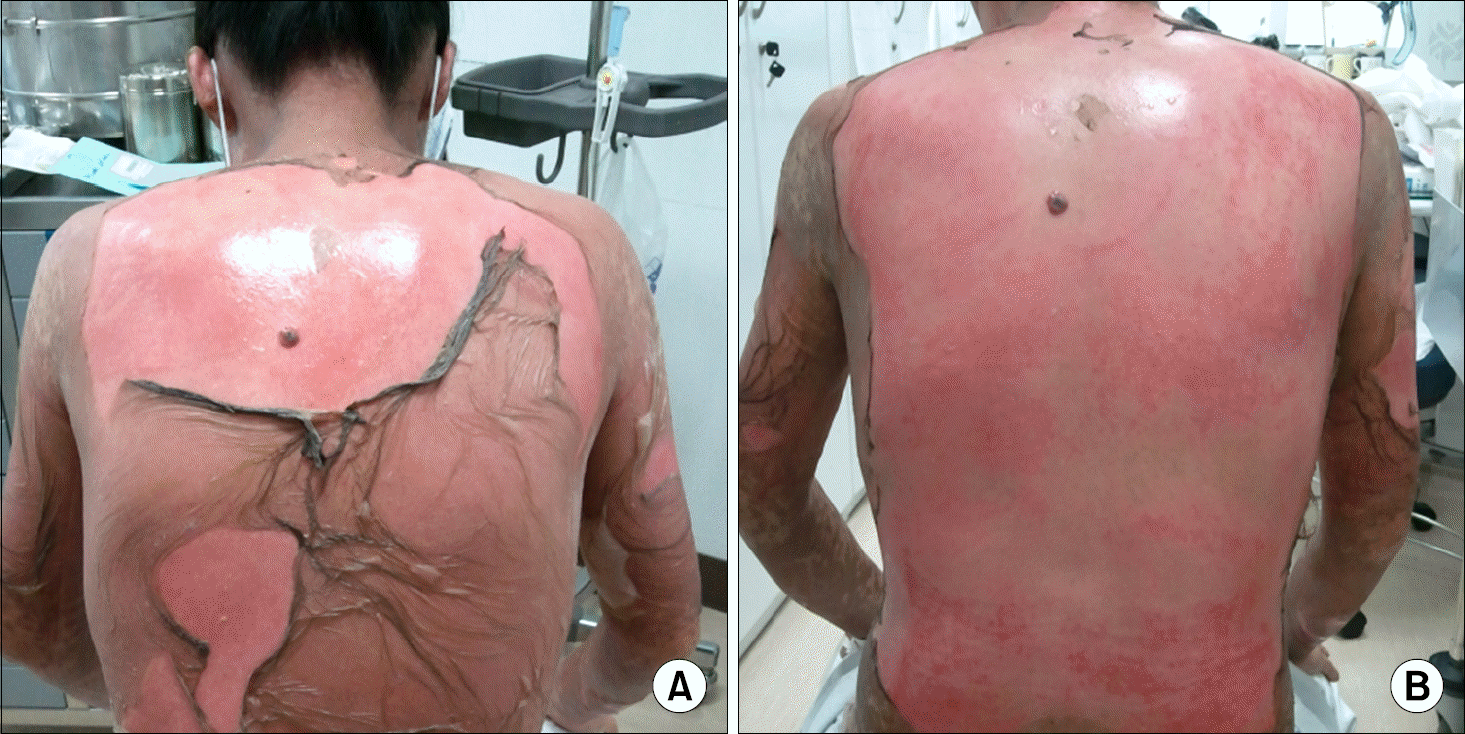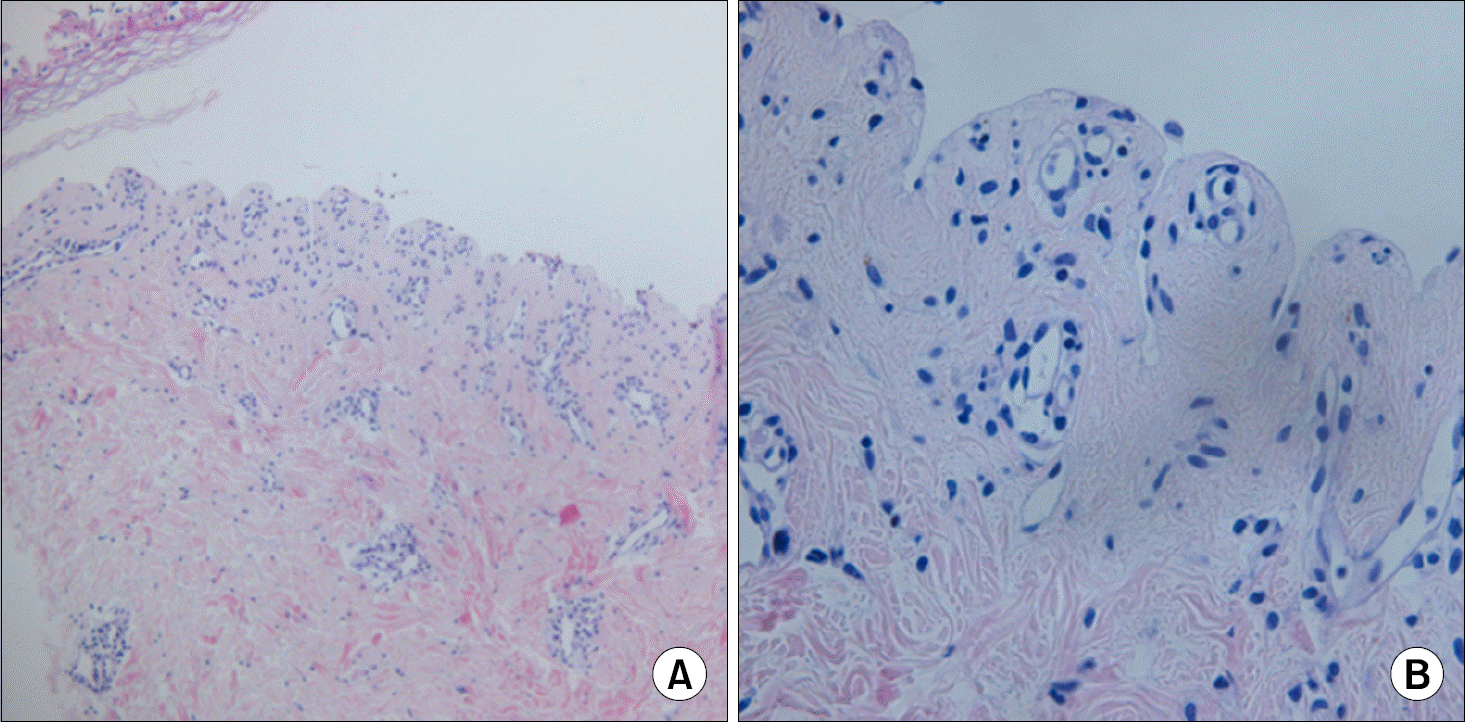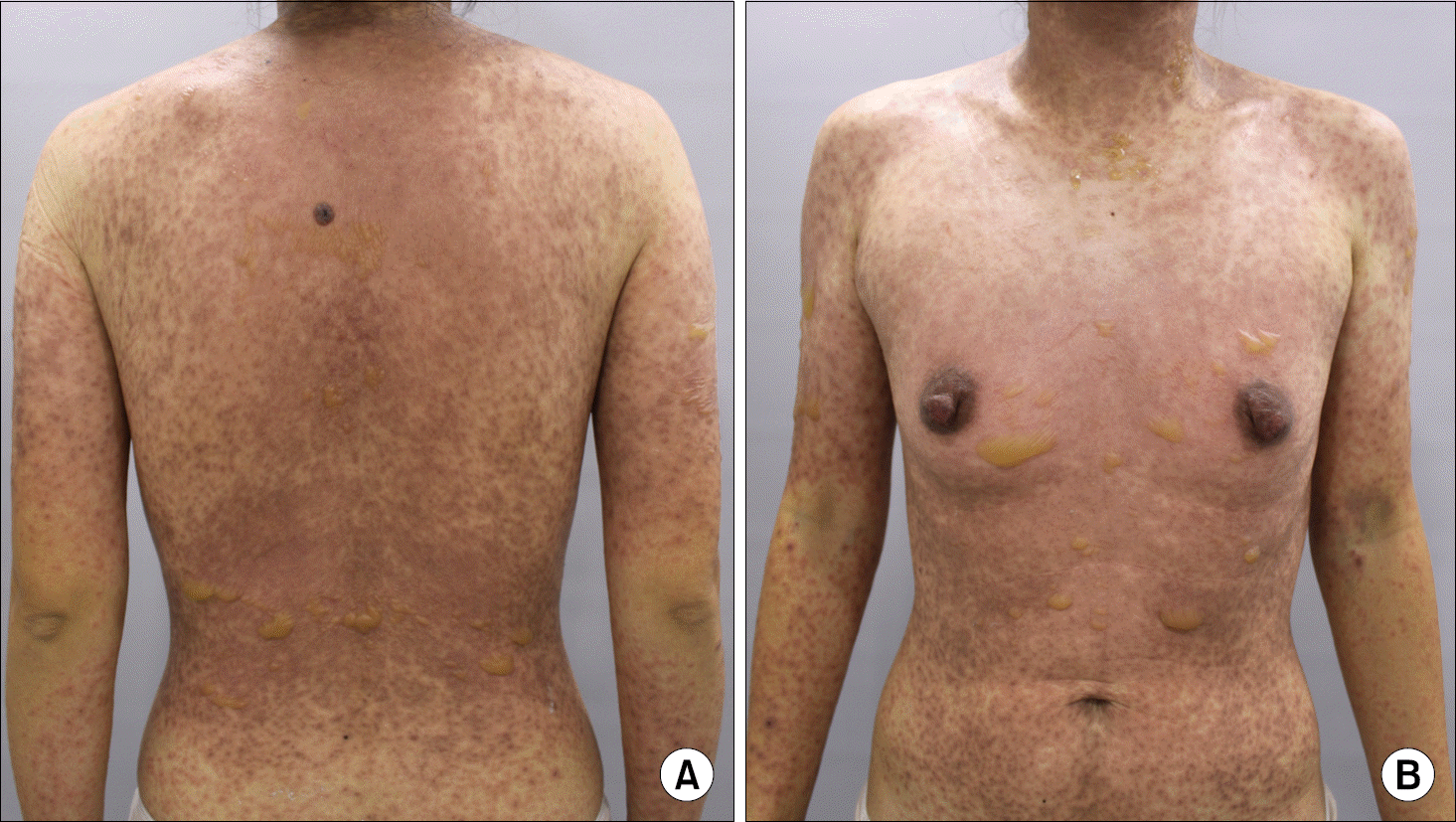Abstract
Toxic epidermal necrolysis (TEN) is a rare disease in abso-lute numbers with an incidence of 2 cases per million peo-ple per year. Most cases of TEN are caused by drugs, but certain infectious diseases may have an impact on the risk. There are rare reports of TEN occurring without history of drug ingestion in systemic lupus erythematosus (SLE), appearing similar to cutaneous lupus and early TEN manifestations, such as erythema multiforme. This report de-scribes a patient with SLE who presented with manifestations of TEN after ceftriaxone treatment. The patient was newly diagnosed with SLE and TEN occurring eight days after cessation of ceftriaxone. Considering possible etiol-ogies, we could not exclude ceftriaxone as the cause of TEN. After intravenous immunoglobulin with glucocorticoid, clinical symptoms improved.
References
1. Harr T, French LE. Toxic epidermal necrolysis and Stevens-Johnson syndrome. Orphanet J Rare Dis. 2010; 5:39.

2. Halevy S, Ghislain PD, Mockenhaupt M, Fagot JP, Bouwes Bavinck JN, Sidoroff A, et al. EuroSCAR Study Group. Allopurinol is the most common cause of Stevens-Johnson syndrome and toxic epidermal necrolysis in Europe and Israel. J Am Acad Dermatol. 2008; 58:25–32.

4. Mandelcorn R, Shear NH. Lupus-associated toxic epidermal necrolysis: a novel manifestation of lupus? J Am Acad Dermatol. 2003; 48:525–9.

5. Obermoser G, Sontheimer RD, Zelger B. Overview of common, rare and atypical manifestations of cutaneous lupus erythematosus and histopathological correlates. Lupus. 2010; 19:1050–70.

6. Lee HY, Tey HL, Pang SM, Thirumoorthy T. Systemic lupus erythematosus presenting as Stevens-Johnson syndrome and toxic epidermal necrolysis: a report of three cases. Lupus. 2011; 20:647–52.

7. Horne NS, Narayan AR, Young RM, Frieri M. Toxic epidermal necrolysis in systemic lupus erythematosus. Autoimmun Rev. 2006; 5:160–4.

8. Lateef A, Tan KB, Lau TC. Acute generalized ex-anthematous pustulosis and toxic epidermal necrolysis induced by hydroxychloroquine. Clin Rheumatol. 2009; 28:1449–52.

9. Callaly EL, FitzGerald O, Rogers S. Hydroxychloroquine- associated, photo-induced toxic epidermal necrolysis. Clin Exp Dermatol. 2008; 33:572–4.
10. Ziemer M, Kardaun SH, Liss Y, Mockenhaupt M. Stevens-Johnson syndrome and toxic epidermal necrolysis in patients with lupus erythematosus: a descriptive study of 17 cases from a national registry and review of the literature. Br J Dermatol. 2012; 166:575–600.

11. Sassolas B, Haddad C, Mockenhaupt M, Dunant A, Liss Y, Bork K, et al. ALDEN, an algorithm for assessment of drug causality in Stevens-Johnson Syndrome and toxic epidermal necrolysis: comparison with case-control analysis. Clin Pharmacol Ther. 2010; 88:60–8.

12. Mockenhaupt M. The current understanding of Stevens-Johnson syndrome and toxic epidermal necrolysis. Expert Rev Clin Immunol. 2011; 7:803–13.

13. Mockenhaupt M. Severe drug-induced skin reactions: clinical pattern, diagnostics and therapy. J Dtsch Dermatol Ges. 2009; 7:142–60.

Figure 2.
It shows skin detachment and new epidermis regeneration. Skin detachment start in back at hospital day 22 (A). Around hospital day 30, almost skin detachment is over and new epidermis go into new regeneration (B).

Figure 3.
It shows skin pathology stained haematoxylin eosin. Epidermis separate from subepidermal layer (A, ×100). Several vacuo-lization were observed in subepidermal layer (B, ×400). Because total seperat-ion from dermal- epidermal junction, it is difficult to observe the vacuolar alteration and solitary necrotic kerati-nocyte. How-ever, it is not observed that moderate to dense periadnexal and perivascular lymphocyte infiltration consistent with SLE.





 PDF
PDF ePub
ePub Citation
Citation Print
Print



 XML Download
XML Download